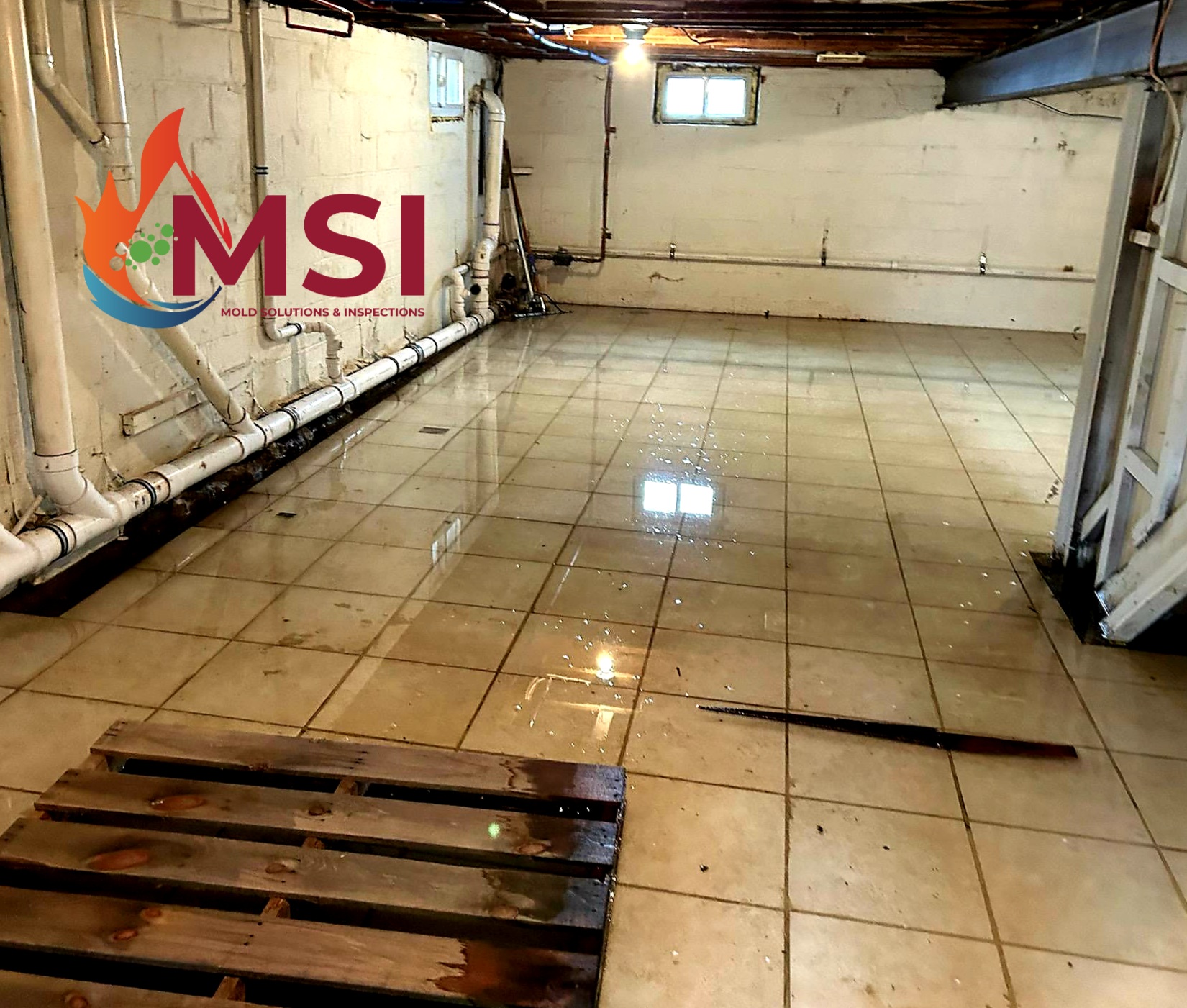Storm Water Backing Up
In many older houses with basements (mostly pre-1980), there is a perimeter foundation drain outside the exterior wall, at the level of the basement floor, next to the footings at the time the house was built. A pipe was usually installed from the perimeter foundation drain to the street where it was connected to the city storm sewer system.
This can become a problem as the city storm sewer system becomes too small when more development causes more rain runoff. When this happens, the rainwater in the sewer system can get so high that water flows backwards toward the house.
Usually, the installation of an interior perimeter basement drain system connected to a sump pump will take care of the problem. If it doesn’t, the (more expensive) alternative is to dig up and cap the pipe that is running from the house to the street from the perimeter foundation drain. However, this is not always possible; many times, this pipe is also draining sanitary waste from toilets and sinks in the house.
Sewer Water Back Up
If the water is coming up through floor drains or sink drains in the basement, then the problem is often water backing up from the municipal sanitary sewer system. During heavy rains, combined sewer systems can become overwhelmed with water. This can cause sewer water to back up in the system and sometimes into homes.
There are other possible explanations, too. Sewer backups can be caused by individual service lines being plugged by grease, waste, tree roots, breaks in pipes or saturated ground. Sewer mains can also be plugged by vandalism or large items dropped down manholes. This kind of flooding is an enormous problem for homeowners, as it’s largely out of your control and probably means fecal waste backing up into basements. Not only is it disgusting, but it can also be a serious health hazard.
In order to keep your individual lines clear, you can install backflow preventers that help stop sewer water from flowing backward into the house. Proper maintenance of your individual lines – for example, pouring tree root killer down your toilets once a year – can also go a long way in preventing sewage backups. Still, the problem is often out of your control. Sewage in your basement means a major cleanup and a lot of uncertainty about future problems. If it’s something you’ve seen in your home, you’ll have to get your city government involved. At the very least, be aware of the problem and don’t leave anything valuable near your downstairs drains.








